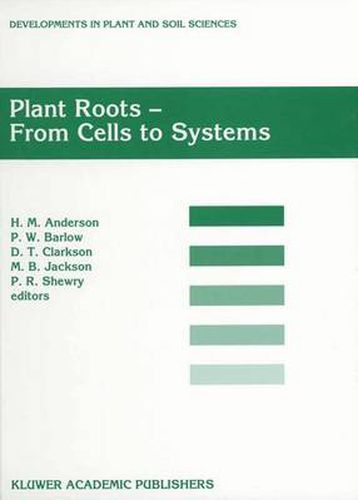Readings Newsletter
Become a Readings Member to make your shopping experience even easier.
Sign in or sign up for free!
You’re not far away from qualifying for FREE standard shipping within Australia
You’ve qualified for FREE standard shipping within Australia
The cart is loading…






tests the suitability of using mannitol as an osmoticum during experiments. Pressure probe and SiCSA techniques The expanding maize root tip Use of the cell pressure probe (Htisken et aI. , 1978) and single-cell sampling and analysis (SiCSA; Tomos Individual cells expand to many times their ongl- et aI. , 1994) provide an approach to study plant water nal length as they progress from the meristem to the and solute relations at the resolution of the individual mature zone of root tips. The expansion first accel- cell. In the case of water relations, the pressure probe erates and then decelerates, stopping at the proximal provides the only technique that measures cell tur- end of the expansion zone (Pritchard, 1994). This is gor pressure, and hence turgor adjustment processes, accomplished at constant ceJl turgor (P) and with a loss directly. In some cases, such as the motor cells of pul- of osmotic (7l'j) pressure in the order of 15% (wheat: vini or in the stomatal complex, turgor varies between Tomos et aI. , 1989; maize: Pritchard et aI. , 1993; adjacent cells - making analysis at single cell resolu- Pritchard and Tomos, 1993). The constant turgor indi- tion essential for understanding mechanisms (Irving et cates that changes in cell-wall mechanical properties, aI. , 1994). Correlating turgor pressure measurements rather than driving force, are responsible for the imme- with cell expansion rate permits unique measurement diate control of expansion-rate in roots (Pritchard et aI.
$9.00 standard shipping within Australia
FREE standard shipping within Australia for orders over $100.00
Express & International shipping calculated at checkout
tests the suitability of using mannitol as an osmoticum during experiments. Pressure probe and SiCSA techniques The expanding maize root tip Use of the cell pressure probe (Htisken et aI. , 1978) and single-cell sampling and analysis (SiCSA; Tomos Individual cells expand to many times their ongl- et aI. , 1994) provide an approach to study plant water nal length as they progress from the meristem to the and solute relations at the resolution of the individual mature zone of root tips. The expansion first accel- cell. In the case of water relations, the pressure probe erates and then decelerates, stopping at the proximal provides the only technique that measures cell tur- end of the expansion zone (Pritchard, 1994). This is gor pressure, and hence turgor adjustment processes, accomplished at constant ceJl turgor (P) and with a loss directly. In some cases, such as the motor cells of pul- of osmotic (7l'j) pressure in the order of 15% (wheat: vini or in the stomatal complex, turgor varies between Tomos et aI. , 1989; maize: Pritchard et aI. , 1993; adjacent cells - making analysis at single cell resolu- Pritchard and Tomos, 1993). The constant turgor indi- tion essential for understanding mechanisms (Irving et cates that changes in cell-wall mechanical properties, aI. , 1994). Correlating turgor pressure measurements rather than driving force, are responsible for the imme- with cell expansion rate permits unique measurement diate control of expansion-rate in roots (Pritchard et aI.